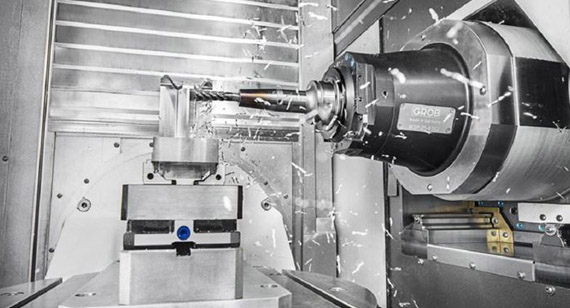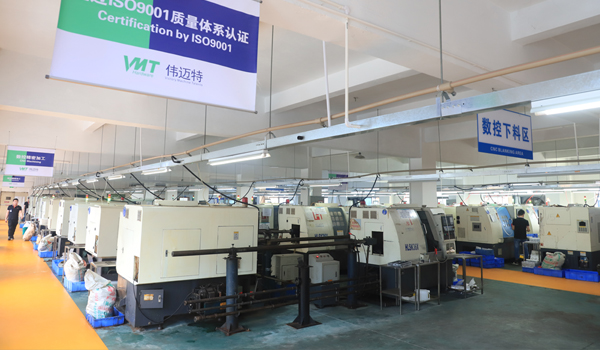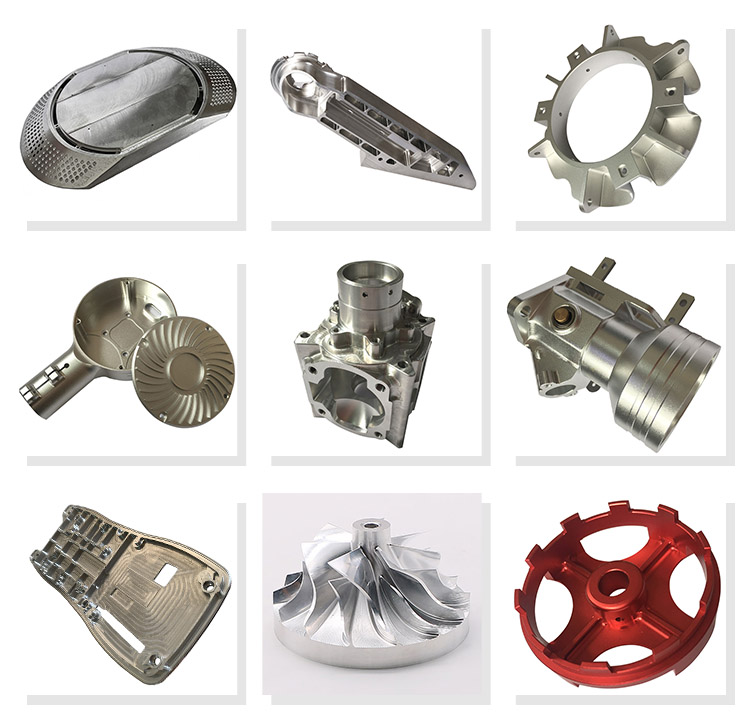15 years one-stop China custom CNC machining parts factory
 136 |
Published by VMT at Sep 22 2024
136 |
Published by VMT at Sep 22 2024
In today's fast-paced manufacturing world, prototyping plays a crucial role in product development. Prototypes allow manufacturers to test the functionality, design, and performance of a part before it goes into full production. CNC prototyping has become an essential tool in this process, providing the accuracy, precision, and versatility required to meet the needs of various industries. Whether you're in the automotive, aerospace, medical, or electronics sector, CNC prototyping offers a reliable solution for developing and refining custom CNC machined parts.
This comprehensive guide will take you through the fundamentals of CNC prototyping, its advantages, limitations, and applications. We will also explore how CNC machining compares to other prototyping methods like 3D printing and injection molding, helping you choose the right approach for your project.
Prototyping is the process of creating a functional or visual model of a part or product before it goes into mass production. The goal is to evaluate design, function, manufacturability, and performance in real-world conditions. Prototypes can range from simple, low-fidelity models used to evaluate a concept, to fully functional parts that mirror the final product.
In the world of custom CNC machining, prototypes are used to test CNC machined parts, ensuring that they meet the required specifications before moving into large-scale production. This process helps identify potential design flaws, reduces the risk of costly mistakes, and shortens product development cycles.

Traditional prototyping involves manual processes that can be time-consuming and labor-intensive. Techniques like hand machining, casting, and even carving models out of wood or clay were once the primary methods for creating prototypes. These processes were often slow and lacked the precision needed for modern engineering applications.
Rapid prototyping, on the other hand, is a group of technologies designed to speed up the prototype creation process, allowing for faster iterations and refinements. CNC prototyping and 3D printing are two of the most commonly used rapid prototyping techniques today. Both methods enable manufacturers to produce parts quickly, with varying degrees of complexity and precision.
While CNC machining is a popular prototyping method, several traditional rapid prototyping processes are also used in various industries. Here’s a brief overview of some of these methods:
Stereolithography (SLA) 3D Printing
SLA is one of the earliest forms of 3D printing, using ultraviolet (UV) lasers to solidify layers of photopolymer resin. SLA is ideal for creating prototypes with high detail and smooth surfaces, making it popular for visual models and components requiring intricate geometries.
Fused Deposition Modeling (FDM) 3D Printing
FDM is a 3D printing method that uses thermoplastic materials, extruding them layer by layer to build the prototype. It’s one of the most common and affordable 3D printing techniques, but FDM parts often lack the precision and surface finish needed for high-performance applications.
Selective Laser Melting (SLM) – Powder Bed Fusion 3D Metal Printing
SLM, also known as powder bed fusion, uses a high-powered laser to melt and fuse metal powders into solid parts. This method allows for the production of complex metal parts directly from a digital file. SLM is used in industries like aerospace and medical devices, where high-strength, custom metal parts are required.
Selective Laser Sintering (SLS) 3D Printing
SLS is similar to SLM but works with plastic powders instead of metal. A laser selectively fuses the powder particles layer by layer to create solid parts. SLS is often used for creating durable prototypes from materials like nylon and other engineering plastics.
Sheet Lamination
Sheet lamination involves bonding layers of material (such as paper, metal, or plastic) to form a prototype. While not as precise as CNC machining, it’s useful for creating quick, cost-effective prototypes, especially for non-metal parts.
Digital Light Processing (DLP) 3D Printing
DLP is similar to SLA but uses a projector instead of a laser to cure photopolymer resin. It’s a faster process than SLA and is often used for creating high-resolution prototypes in industries like dental and jewelry manufacturing.
Binder Jetting 3D Printing
Binder jetting involves depositing a liquid binder onto layers of powdered material, which are then hardened to form the prototype. Binder jetting is commonly used for making full-color prototypes or creating parts that can be later sintered into metals or ceramics.
3D printing offers several advantages for rapid prototyping, such as the ability to produce complex geometries and reduced lead times. However, it has limitations in terms of material strength, precision, and surface finish compared to CNC machining. While 3D printing is a great option for low-cost, non-functional prototypes, CNC machining is often the better choice for high-performance, precision components.
CNC machining is ideal for prototyping because it offers unmatched precision, material versatility, and the ability to create fully functional prototypes. CNC precision machining allows for tight tolerances and exceptional dimensional accuracy, which are critical for components used in industries like aerospace, automotive, and medical devices. Additionally, CNC machining supports a wide range of materials, from metals like aluminum and steel to engineering plastics, making it suitable for a variety of applications.
Custom CNC machining also allows for rapid iterations of a prototype design. If adjustments are needed, engineers can easily modify the CAD (Computer-Aided Design) model and re-run the CNC program to produce an updated version of the part. This flexibility makes CNC machining a go-to option for both low-volume prototypes and full-scale production runs.
CNC prototyping involves a variety of machining operations, each suited to specific types of parts and materials. Below are the most common CNC prototyping operations:
CNC milling is a versatile machining process that involves rotating cutting tools to remove material from a workpiece. It’s used to create prototypes with complex geometries, flat surfaces, holes, and pockets. CNC mills operate on multiple axes, allowing for the production of parts with varying angles and intricate designs.

CNC turning is used for parts that are cylindrical or round in shape. The workpiece rotates while a cutting tool removes material to shape the part. CNC turning is ideal for producing prototypes like shafts, bolts, and bushings, where precise diameters and symmetrical features are important.

Multi-Axis CNC Machining
Multi-axis CNC machining refers to machines that operate on more than the traditional three axes (X, Y, and Z). Machines with four, five, or even more axes can create highly complex parts with fewer setups and faster production times. Multi-axis CNC machining is often used for prototypes that require intricate designs or freeform surfaces, such as aerospace or medical components.
CNC machining offers several key benefits for producing prototypes, making it a preferred method in many industries:
1. High Accuracy and Precision
CNC machines are known for their ability to produce parts with tight tolerances, often as low as ±0.001 mm. This level of precision is essential for prototypes that must match exact design specifications, especially for high-performance or safety-critical applications.
2. Cost-Effectiveness
While the initial setup costs for CNC machining may be higher than some other methods, the ability to produce functional, high-quality prototypes quickly often results in long-term cost savings. CNC machining reduces the need for additional tooling and can produce both prototypes and final production parts.
3. Consistency and Repeatability
Once a CNC machine is programmed, it can produce multiple copies of a prototype with the same level of precision. This consistency is important for testing and validation, as identical prototypes are required for accurate results.
4. Material Versatility
CNC prototyping can accommodate a wide range of materials, including metals, plastics, and composites. This versatility allows for the creation of prototypes that closely mimic the material properties of the final product.
5. Time-Saving
CNC machining can significantly reduce lead times compared to traditional manufacturing methods. By automating the machining process, CNC machines can produce prototypes quickly, allowing for faster iterations and shorter product development cycles.
6. High Tolerance
CNC machines are capable of maintaining high tolerances, which are critical for prototypes that must fit precisely with other components or perform reliably in demanding conditions.
7. From Prototype to Production
CNC machining is not just limited to prototyping. Once a prototype is validated, the same CNC process can be used for mass production, ensuring a seamless transition from prototype to final product.
8. Dimensional Accuracy
CNC machines provide excellent dimensional accuracy, ensuring that prototypes meet exact specifications and function as intended in real-world applications.
While CNC machining offers many advantages, there are some limitations to consider:
1. Geometric Limitations
CNC machining is limited by the tooling and access of the cutting tools. Some complex internal geometries or features may be difficult or impossible to achieve using CNC machining alone, requiring additional processes like 3D printing or assembly.
2. Technical Expertise
CNC machining requires skilled operators and engineers to set up, program, and run the machines. Without the necessary expertise, errors in programming or machine setup can lead to costly mistakes and material waste.
3. Subtractive Manufacturing Processes and Material Waste
CNC machining is a subtractive manufacturing process, meaning material is removed from a workpiece to create the final part. This can result in significant material waste, especially when machining large or complex prototypes.
4. Costs Higher Than 3D Printing
For simple, non-functional prototypes, 3D printing is often more cost-effective than CNC machining. CNC machining is typically reserved for functional prototypes or parts that require high precision and material strength.
5. Not Environmentally Friendly
CNC machining generates material waste and consumes energy, making it less environmentally friendly than some additive manufacturing processes like 3D printing, which produces minimal waste.
CNC prototyping is used across various industries to develop functional prototypes and production-ready parts. Some key industries include:

CNC prototyping is used to create prototypes for automotive components such as engine parts, transmission systems, and braking components. These prototypes allow for testing and validation before mass production.
The medical industry relies on CNC prototyping for developing surgical instruments, implants, and other medical devices. CNC machining provides the precision and biocompatible materials needed for these applications.
Aerospace Industry
In aerospace, CNC prototyping is essential for producing high-performance parts that meet strict tolerances and lightweight requirements. Prototypes for turbine blades, structural components, and other critical parts are often made using CNC machining.
Military and Defense Industry
The military and defense sectors use CNC prototyping for developing weapons, armor, and other defense systems. CNC machining ensures that prototypes meet the stringent quality and durability standards required for military applications.
To get the most out of CNC prototyping, consider the following tips:
Reduce Prototype Complexity
Simplify the design of your prototype to reduce machining time and cost. Avoid unnecessary features or complex geometries that may require multiple setups or specialized tooling.
Use Default Tolerances
In most cases, default CNC machine tolerances are sufficient for prototypes. Specifying unnecessarily tight tolerances can increase machining time and cost.
Design with Tool Geometry in Mind
When designing your prototype, keep in mind the limitations of CNC tooling. For example, internal corners will always have a small radius due to the cutting tool’s geometry, so adjust your design accordingly.
Use an Experienced CNC Prototype Manufacturer
Partnering with an experienced CNC prototype manufacturer ensures that your prototypes are produced with the highest level of precision and quality. Look for a provider with a track record of success in your industry and access to advanced CNC machinery.
Part Tolerances
CNC machining can achieve tighter tolerances than injection molding, making it ideal for prototypes that require high precision.
Both CNC machining and injection molding support a wide range of materials, but CNC offers more versatility for one-off prototypes or small production runs.
Surface Quality
CNC machined prototypes typically have superior surface quality compared to injection molded parts, especially when fine detailing and smooth finishes are required.
Material Consumption
CNC machining is a subtractive process that results in more material waste than 3D printing, which is additive and uses only the material required for the part.
Prototyping Cost
3D printing is generally more cost-effective for simple, non-functional prototypes, while CNC machining is preferred for high-performance parts that require precision and strength.
Supported Materials
CNC machining supports a wider range of materials, including metals, plastics, and composites, while 3D printing is more limited, especially when it comes to metal parts.
Part Tolerance and Toughness
CNC machined prototypes offer superior dimensional accuracy and toughness compared to most 3D printed parts, making CNC the better choice for functional prototypes and end-use parts.
CNC prototyping is an invaluable tool for developing high-quality, functional prototypes in a variety of industries. With its unmatched precision, material versatility, and ability to produce both prototypes and production parts, CNC machining remains the preferred method for manufacturers looking to bring their products to market efficiently. Whether you need a single prototype or are transitioning to full-scale production, CNC machining services can help you achieve your goals.
At VMT, we specialize in custom CNC machining and CNC prototyping services, offering fast turnaround times and exceptional precision. Whether you need a prototype for testing or a full production run, our team is ready to help you achieve your project goals with high-quality CNC machined parts.

What are the materials for CNC prototypes?
CNC prototypes can be made from a variety of materials, including metals like aluminum, steel, and titanium, as well as plastics such as ABS, POM, and nylon.
Is there a better choice for prototyping than CNC prototyping?
The best choice depends on the specific application. CNC prototyping is ideal for high-precision, functional prototypes, while 3D printing is more suited for quick, non-functional models.
What factors affect the cost of CNC prototyping?
Material choice, complexity of the design, tolerances, and production volume all impact the cost of CNC prototyping.
Is CNC prototyping the best choice for prototyping?
CNC prototyping is often the best choice for prototypes that require precision, strength, and functionality. For simple or non-functional models, 3D printing may be more cost-effective.
Which is cheaper: CNC machined prototypes or injection molded prototypes?
For low-volume production, CNC machining is typically more cost-effective than injection molding. However, for high-volume production runs, injection molding becomes more economical.
